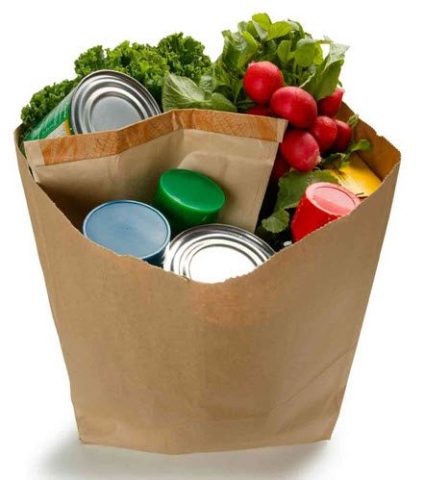The way to make your freezer work for you is to stock up on ziploc baggies so you can freeze items as soon as you bring them home from the store. If you find a great deal on something that freezes well, buy several pounds, bring it all home and drop a piece or two into a baggie, then stash it in the freezer. This method is also good for products you use infrequently but sometimes need for recipes. Bring home a sack of jalapeno peppers, chives, green onions, etc., then chop and freeze them. This way, you’ll have what you need for cooking with no waste.
Try generic brands.
We all have favorite items where we must have a certain brand and the generic copy just won’t do. (Mine is Best Foods mayonnaise.) With other products, the generic brand can be worth a try. I’ve found that store brands of condiments like ketchup and mustard are just as good as the more expensive brands, and have become especially fond of Kroger’s BBQ sauces, hot sauce, marinades and wing sauce. Generics are worth checking out, especially when they’re on special, because you may find one that you actually prefer to the name brands.
Take advantage of BOGO deals.
Those “buy one, get one free” offers are great when they involve a product that you use frequently and will be able to use up before it goes bad. BOGO deals are fine for staples and items with a long shelf life but not so good for things like meat, baked goods and produce that need to be used quickly.
However, if you know that you will either use or freeze all of the items while they’re still good, BOGO deals are super. I use a lot of cheese, so I’m always looking for a BOGO on chunk, sliced or shredded cheese. Canned items like salsa and pasta sauce are also good deals when you find a BOGO offer.
Look for manager’s specials.
When I go to my favorite grocery store, I always check out the manager’s specials on items like produce, meat and seafood. I’ve found $5 packages of gourmet salad blends for just $1 because the expiration date was coming close. I’ve gotten crab legs that usually sell for $12 a pound for less than half that and $6 jars of oysters for $2.49 each. Do be sure that you’ll be able to use the products before the expiration dates.
Don’t shop hungry.
When you’re starving, everything looks delicious, even if it’s way overpriced. Shop with a plan, shop with a list and most of all, shop on a full stomach.
The money you are saving is starting to add up. On the next page you will find some more advice that will save you money and also help keep your diet on track. The bargains our out there if you know where to look and what to avoid.
Keep reading to really bring home this money saving advice.
Even if you’re not famished, the deli section is still a minefield of overpriced items. Fortunately, in my favorite store it’s located way over at the end where I can easily bypass it, letting me avoid temptation.
Dump the junk.
Some of the biggest budget killers are things you don’t really need and would be better off without. How much of your food budget is going for soft drinks, candy, cookies and processed foods? Probably too much, and both your bottom line and your waistline would be improved by cutting out some of the empty calories.
Make periodic pilgrimages to the big box and low price grocery stores.
We all have our favorite neighborhood stores for weekly shopping, but most cities also have low end grocery stores like Food-4-Less and big box chains like Costco or Sam’s Club out on the interstate. These aren’t so conveniently located, but they do have the lowest prices in town on many items. Check out the weekly circulars and a couple of times a month, make a trip to these outlets to stock up on the things that are much cheaper here.
Use 99 Cents stores.
This isn’t where you want to shop for everything, but these stores do offer substantial savings on items like paper products, kitchen accessories, pet products and personal care stuff like shampoo and body wash. If you can get a sack of kitty litter for 99 cents here instead of paying $2-3 at the supermarket, why not go for it? Savings on a few items can add up!
The 99 Cents stores are a great place to get ready for holidays like Thanksgiving, Christmas and Easter. You won’t find everything you need for holiday dinners, but you are likely to save big bucks on the items you do find.
Use the boutique grocers only for specialty items.
They don’t call that super-expensive chain “Whole Paycheck” for nothing. Use the upscale grocers only for items you can’t find anywhere else but don’t use it as your usual supermarket and definitely don’t run through them when you’re hungry or in a hurry!
If you start putting some of these tips into your shopping routine the savings will start adding up and over time they could make a big difference in the bottom line of your bank account.
| Written on 7/18/2013 by Linda Cauthen. |








